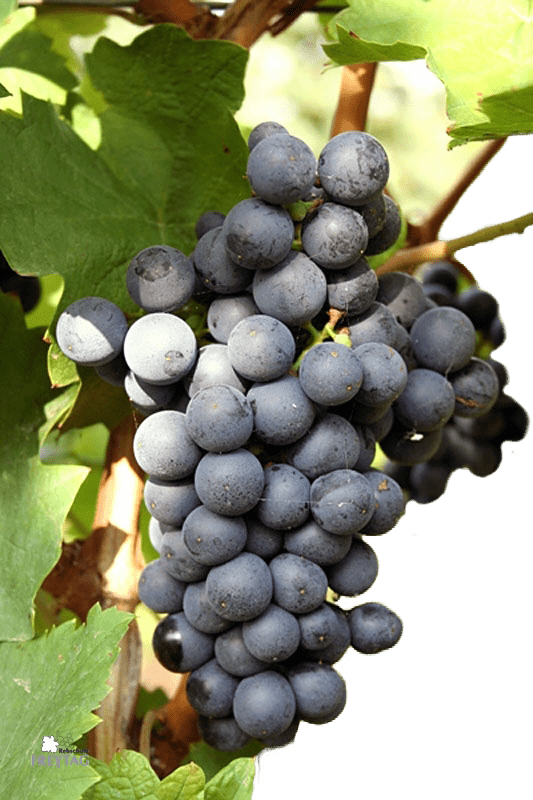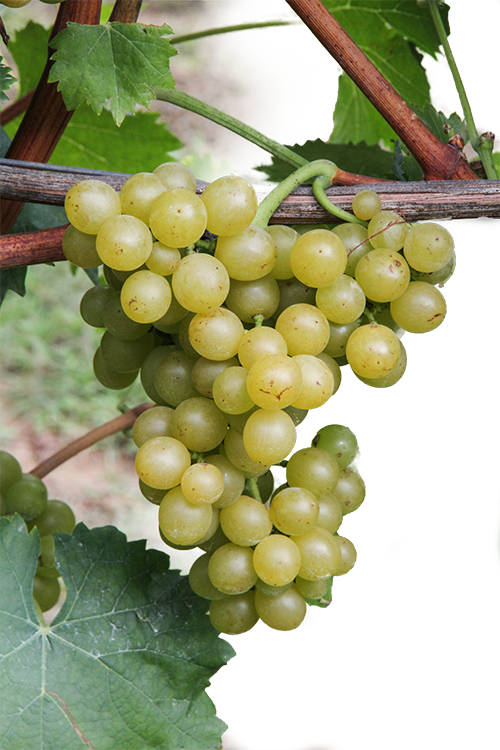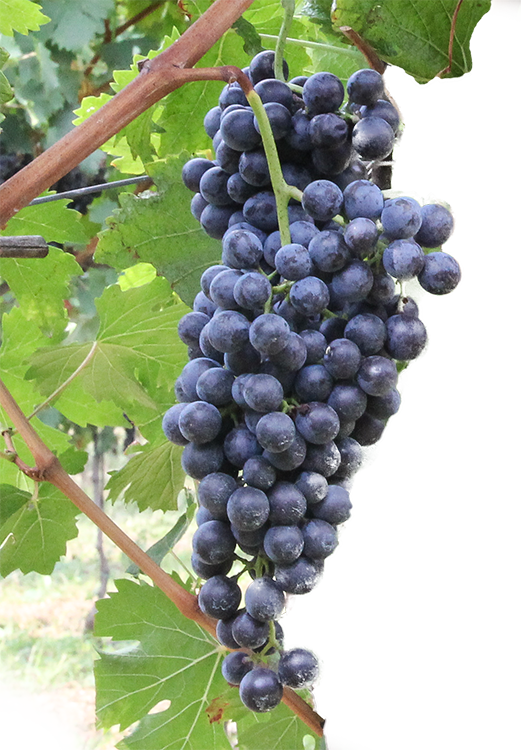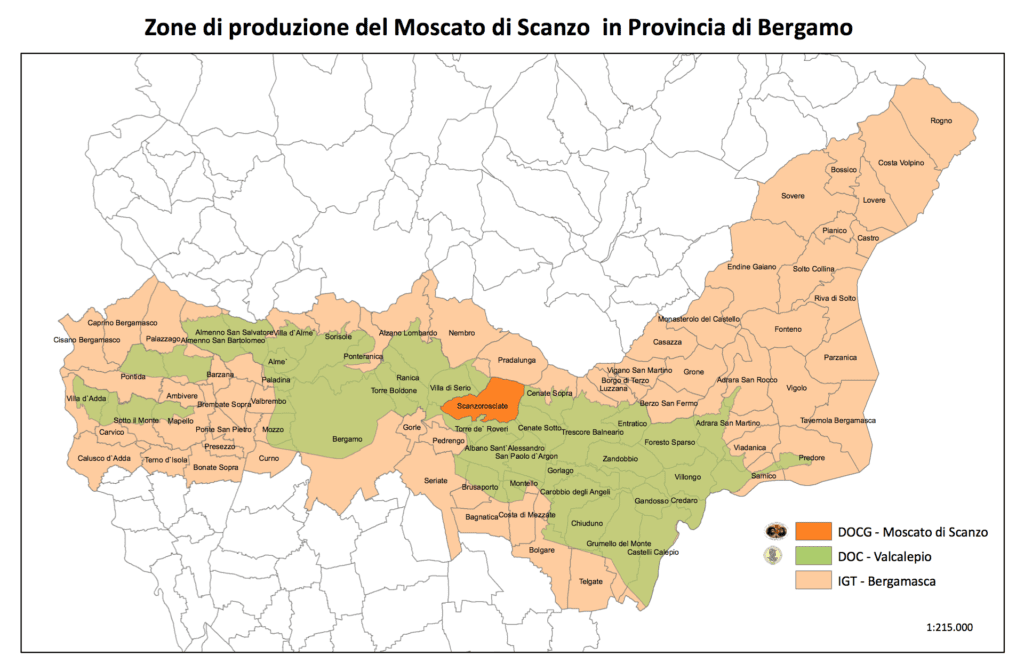Our native varietals, Franconia, Moscato giallo and Moscato di Scanzo, are distinctive features making our region and its traditional wines truly unique.
We have invested in native varietals to make the most of our land and its traditions.
Native Varietals

Though it is also grown on a very limited scale in Friuli and Veneto, the Franconia grape is particularly traditional in our area. Brought to Bergamo when the city was under Austrian rule in the nineteenth century, it has adapted perfectly to our land, to the point that its German name (Limberger) was translated into the local dialect of Bergamo as Imberghem.
Our father Carlo Pecis, who was born in 1913, planted it among the estate’s first vines in 1980 because it reminded him of his childhood: it was the local farmers’ favourite vine, because of its generosity and the fact that it produced wines ideally drunk young, so they could be sold right away.
Over the years we have come to understand that this is by no means a poor man’s grape. If cultivated with due care, it can be made into a number of different wines: first of all, the traditional young wine known as Imberghem; but also a unique, pleasing sparkling rosé made by the traditional method, Quadrifoglio; and, if the grapes are allowed to dry out just a little, a more complex wine which is aged in barriques and assembled with Merlot and Cabernet Sauvignon to create a truly unique wine, Soffio del Misma.
The Moscato giallo vine has been grown in the Bergamo area for centuries. It was traditionally used to make wine for family celebrations and for communion in church.
Sweet, aromatic Moscato giallo grapes are delicious to eat, and their golden yellow colour is a real treat to the eyes.
The winery uses Moscato Giallo grapes in a number of original ways: from a sweet raisin wine (Laurenzio) to a sparkling version made by the traditional method, with no subsequent addition of sugar so that it is perfectly dry.
Moscato di Scanzo is a native varietal, the pride and joy of winemaking in the Bergamo region.
In view of its very limited production, it has always been considered a unique, refined niche wine, with incredible persistence and unique aromatic complexity.
The Moscato di Scanzo grape is used to make a number of wines in the province of Bergamo: Valcalepio Moscato Passito DOC, established in 1993, Moscato di Scanzo or Scanzo DOCG, first established as a DOC wine in 2002, to become a DOCG in 2009, and Bergamasca Moscato IGT.
from: Diego Compagnoni, “Moscato di Scanzo: il vitigno e le tecniche di coltivazione”, Dalmine (BG), Poligrafica s.r.l., 2013.
Use of the name of the grape itself rather than the geographic area to identify first a DOC and then a DOCG wine has caused a lot of confusion among consumers.
Paradoxically, the unfortunate consequence for people like us who produce Valcalepio Moscato Passito DOC, the regulations for which obligatorily require use of 100% Moscato di Scanzo grapes, is that we cannot write on the label that the wine is made from Moscato di Scanzo grapes – even though this is perfectly true – as this “name” is in use to identify a DOC wine. Italy’s wine labelling regulations are very strict, with heavy fines for violations.
We hope that the makers of the two types of wine and the organisations protecting them will find a way around this problem, giving up the fruitless rivalries of the past and working together to make the most of these outstanding wines.



